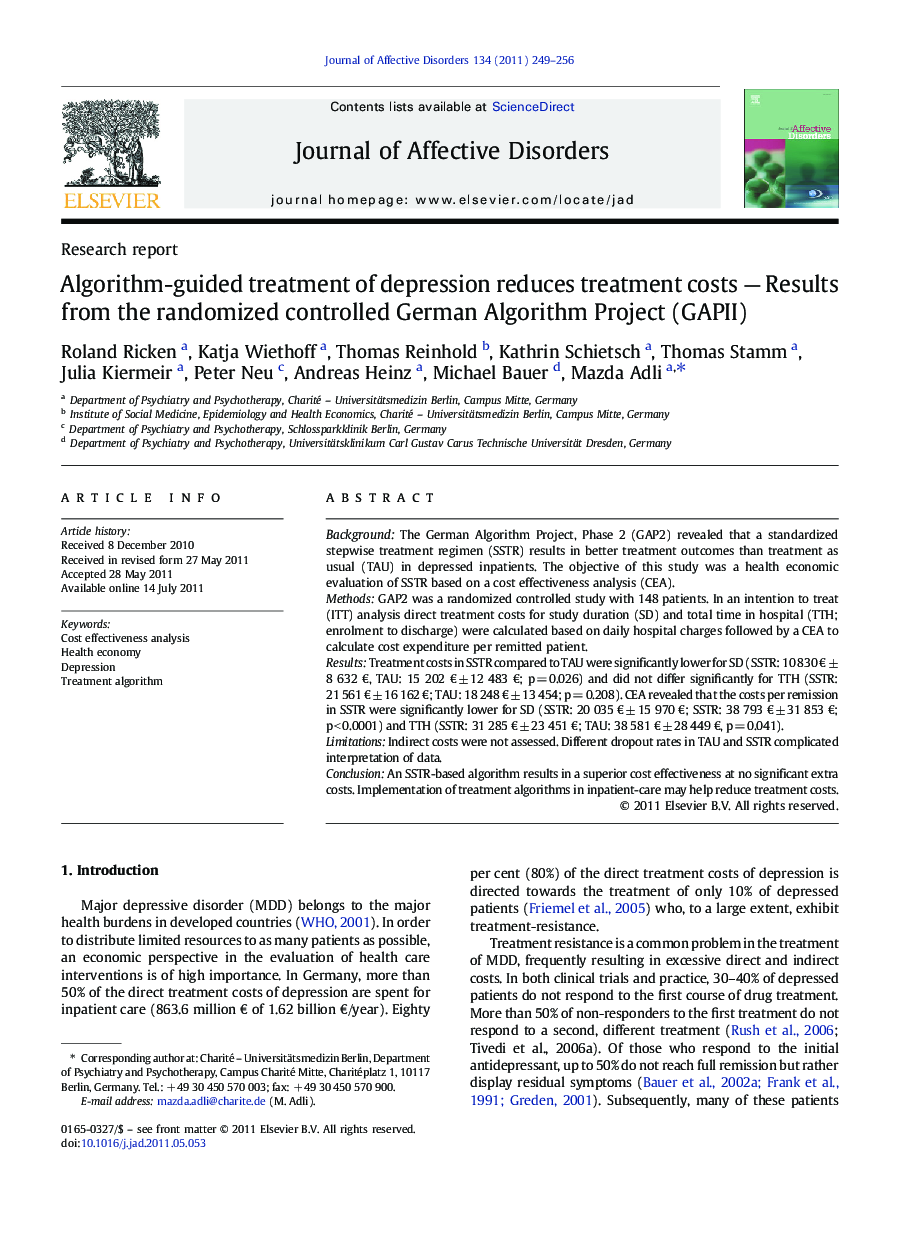| Article ID | Journal | Published Year | Pages | File Type |
|---|---|---|---|---|
| 6235150 | Journal of Affective Disorders | 2011 | 8 Pages |
BackgroundThe German Algorithm Project, Phase 2 (GAP2) revealed that a standardized stepwise treatment regimen (SSTR) results in better treatment outcomes than treatment as usual (TAU) in depressed inpatients. The objective of this study was a health economic evaluation of SSTR based on a cost effectiveness analysis (CEA).MethodsGAP2 was a randomized controlled study with 148 patients. In an intention to treat (ITT) analysis direct treatment costs for study duration (SD) and total time in hospital (TTH; enrolment to discharge) were calculated based on daily hospital charges followed by a CEA to calculate cost expenditure per remitted patient.ResultsTreatment costs in SSTR compared to TAU were significantly lower for SD (SSTR: 10 830 â¬Â ± 8 632 â¬, TAU: 15 202 â¬Â ± 12 483 â¬; p = 0.026) and did not differ significantly for TTH (SSTR: 21 561 â¬Â ± 16 162 â¬; TAU: 18 248 â¬Â ± 13 454; p = 0.208). CEA revealed that the costs per remission in SSTR were significantly lower for SD (SSTR: 20 035 â¬Â ± 15 970 â¬; SSTR: 38 793 â¬Â ± 31 853 â¬; p < 0.0001) and TTH (SSTR: 31 285 â¬Â ± 23 451 â¬; TAU: 38 581 â¬Â ± 28 449 â¬, p = 0.041).LimitationsIndirect costs were not assessed. Different dropout rates in TAU and SSTR complicated interpretation of data.ConclusionAn SSTR-based algorithm results in a superior cost effectiveness at no significant extra costs. Implementation of treatment algorithms in inpatient-care may help reduce treatment costs.
